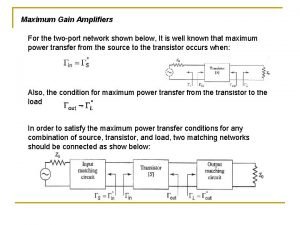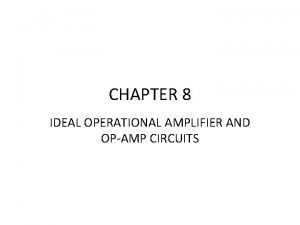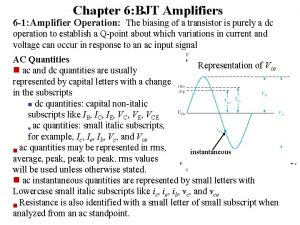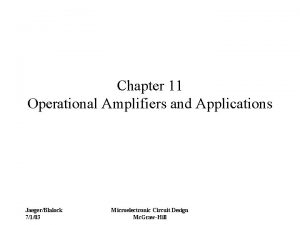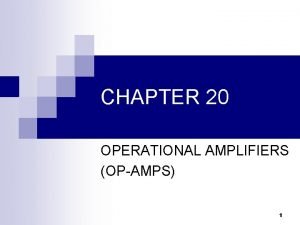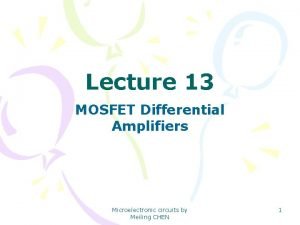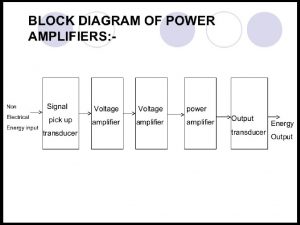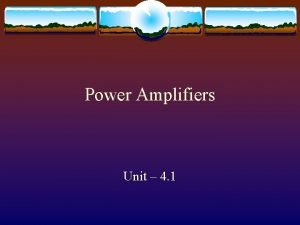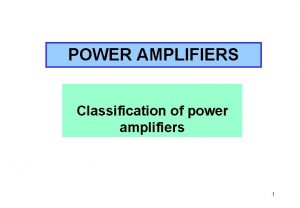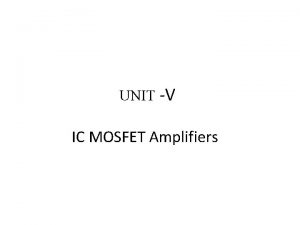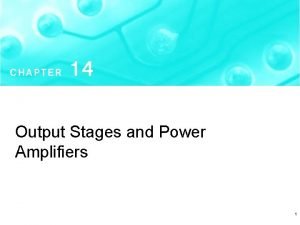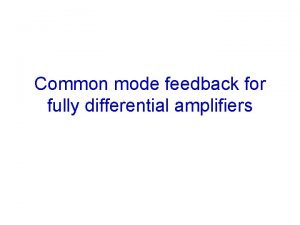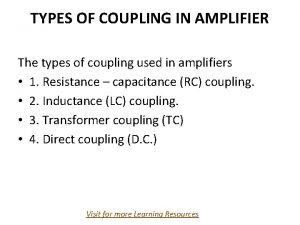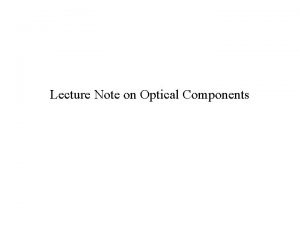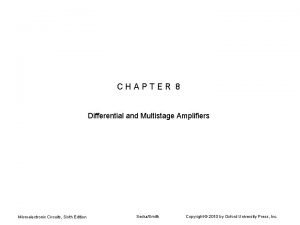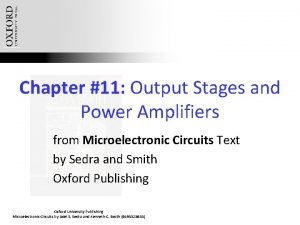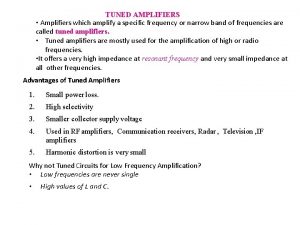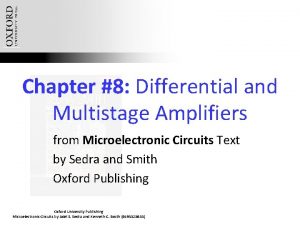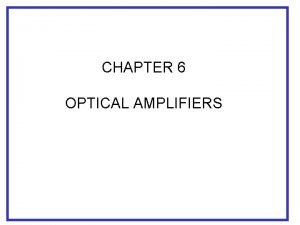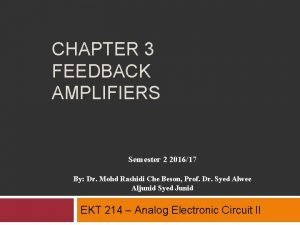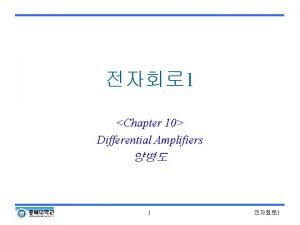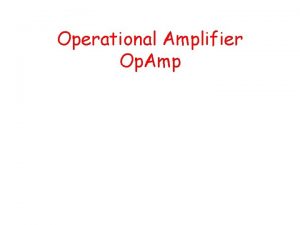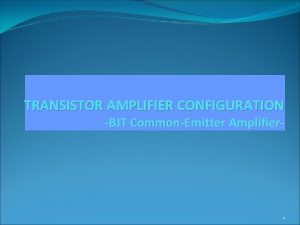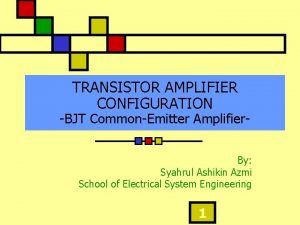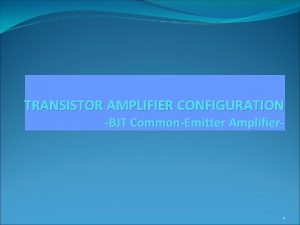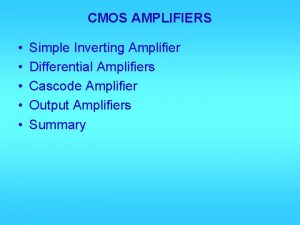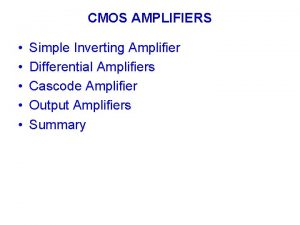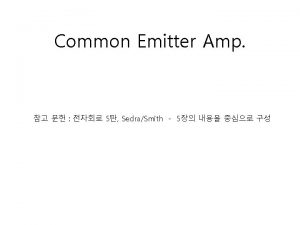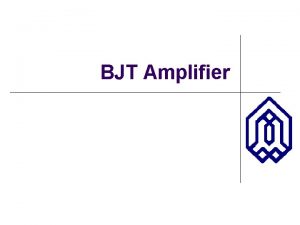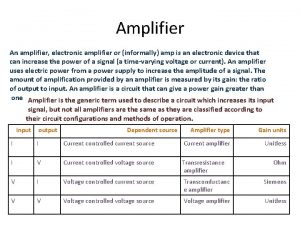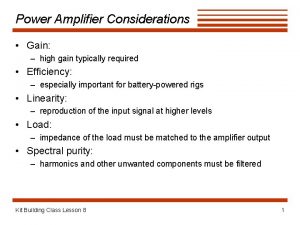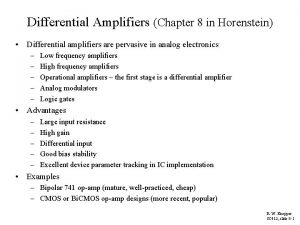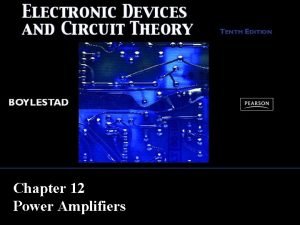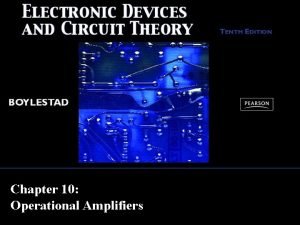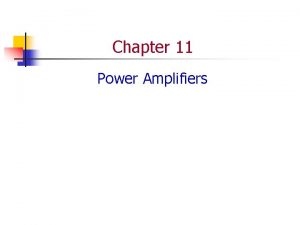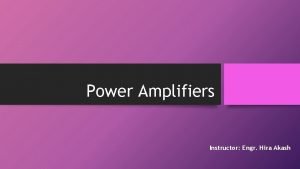Chapter 9 CommonEmitter Amplifiers Amplifier Gain n The























- Slides: 23

Chapter 9 Common-Emitter Amplifiers

Amplifier Gain n The common-emitter (CE) amplifier provides voltage, current, and power gain. n n The common-collector (CC) amplifier provides current and power gain only. The common-base (CB) amplifier provides voltage and power gain only.

Phase Relationships n n The input and output currents are in phase. The input and output voltages are 180° out of phase.

AC Emitter Resistance n AC emitter resistance – The dynamic resistance of the transistor base-emitter junction, used in voltage gain and input impedance calculations.

AC Beta h. FE = dc beta hfe = ac beta

Coupling Capacitors n Coupling capacitors provide dc isolation and ac coupling between amplifier stages.

Bypass Capacitors n A bypass capacitor is most often used to establish an ac ground at a specific point in a circuit.

Amplifier Signals

AC Equivalent Circuit n n Short-circuit all capacitors. Replace all dc voltage sources with a ground symbol.

Amplifier Voltage Gain n n Voltage gain – The factor by which ac signal voltage increases from the amplifier input to the amplifier output. As long as vin and vout are measured in the same fashion (peak, rms, etc. ) the result will be the same.

Calculating Voltage Gain n Example: Calculate the voltage gain of a CE amplifier with IE = 10 m. A, RC = 180 W, and RL = 3 k. W.

The Effects of Loading n n n Load – Any device that draws power from a circuit. Amplifier gain is maximum when the load is open. Open-load voltage gain is found as

Amplifier Input Impedance n Amplifier input impedance indicates the load that an amplifier presents to its signal source. n n The higher the input impedance of an amplifier, the lower the loading effect on its signal source. For a voltage-divider biased CE amplifier:

CE Amplifier Current Gain (Ai ) n n Transistor current gain is equal to hfe. The input and output circuits reduce overall current gain as follows: n n The amplifier input circuit forms a current divider, so input current is lower than source current. The amplifier output circuit forms a current divider, so load current is lower than amplifier output current.

Multistage Gain Calculations n Overall gain equals the product of the stage gain values.

Swamped CE Amplifiers n A swamped amplifier uses a partially bypassed emitter resistance to stabilize voltage gain against changes in h. FE. n Also referred to as a gain -stabilized amplifier.

Voltage Gain

Input Impedance n n n A swamped CE amplifier has higher input impedance than a comparable standard CE amplifier. The value of r. E weighs into the value of Zbase. For a voltage-divider biased, swamped CE amplifier:

h - Parameters n Hybrid parameters (h-parameters) – Transistor specs that describe the component operating characteristics under specific circumstances. n n hie – base input impedance hfe – base-to-collector current gain hoe – output admittance hre – reverse voltage feedback ratio

Measuring h - Parameters

Circuit Calculations Using h- Parameters

h- Parameter Curves

Nonlinear Distortion n Nonlinear distortion – A type of distortion caused by driving the base-emitter junction of a transistor into its nonlinear operating region. n Nonlinear distortion is most often caused by overdriving the amplifier.
 Maximum gain amplifier
Maximum gain amplifier Op amp exam questions solutions
Op amp exam questions solutions Ac voltage gain of common emitter amplifier
Ac voltage gain of common emitter amplifier Cmrr op amp
Cmrr op amp The gain of inveting amplifier is
The gain of inveting amplifier is Mosfet differential amplifier gain
Mosfet differential amplifier gain Compare voltage amplifier and power amplifier
Compare voltage amplifier and power amplifier Power amplifiers classification
Power amplifiers classification Crossover distortion definition
Crossover distortion definition Pmos cs amplifier
Pmos cs amplifier Op amp isolation circuit
Op amp isolation circuit Vbe multiplier class ab
Vbe multiplier class ab Common mode feedback
Common mode feedback Advantages of rc coupling
Advantages of rc coupling Optical amplifiers lecture notes
Optical amplifiers lecture notes Circuit
Circuit Class ab output stage
Class ab output stage Advantages of tuned amplifier
Advantages of tuned amplifier Differential and multistage amplifiers
Differential and multistage amplifiers In-line optical dwdm amplifiers
In-line optical dwdm amplifiers Current feedback
Current feedback Differential pair with active load
Differential pair with active load Applications of amplifiers
Applications of amplifiers Operational amplifier is also called as
Operational amplifier is also called as
